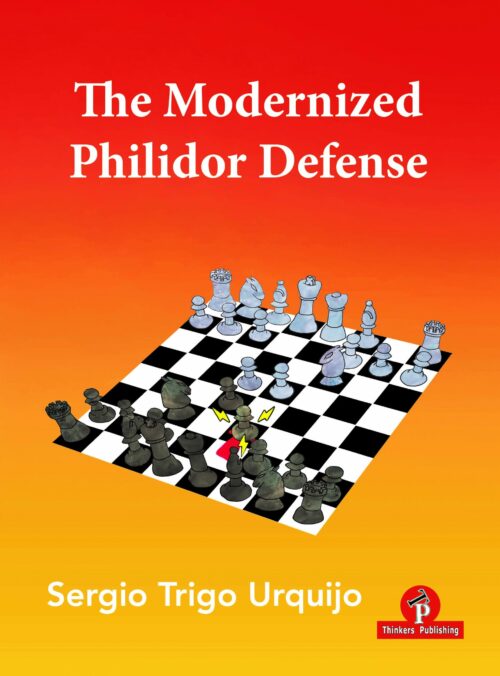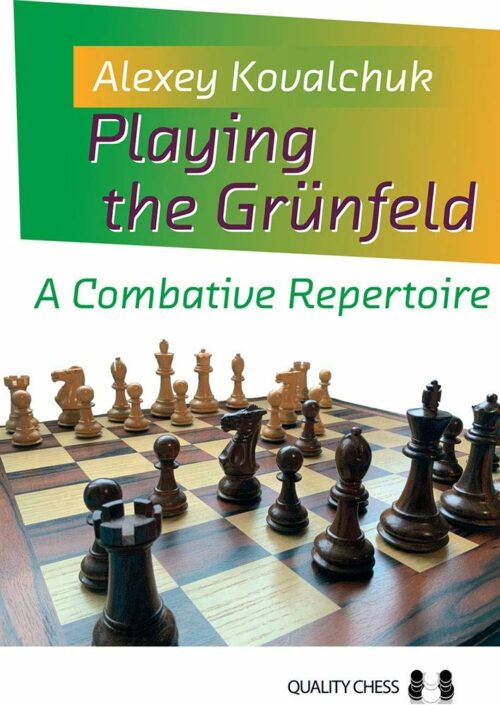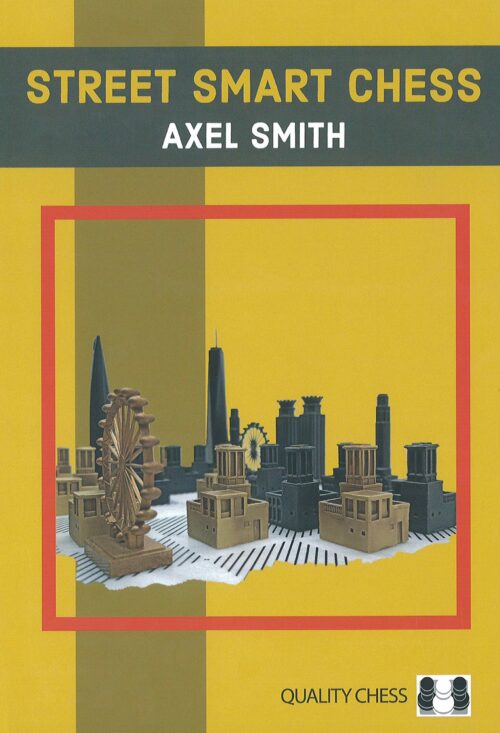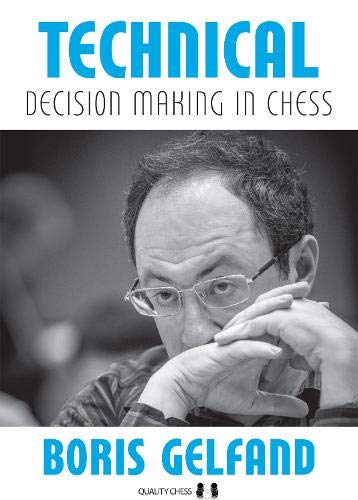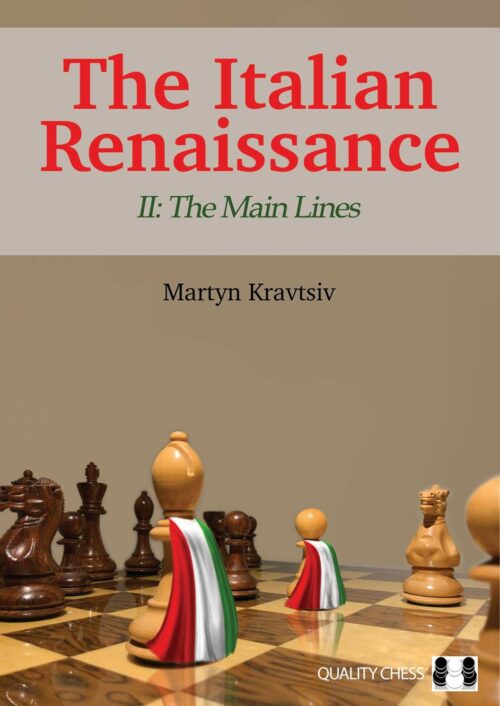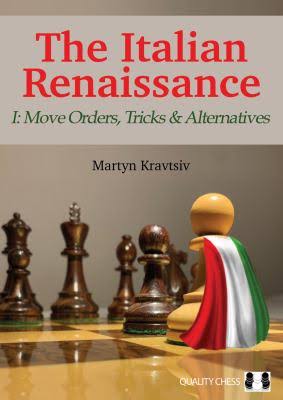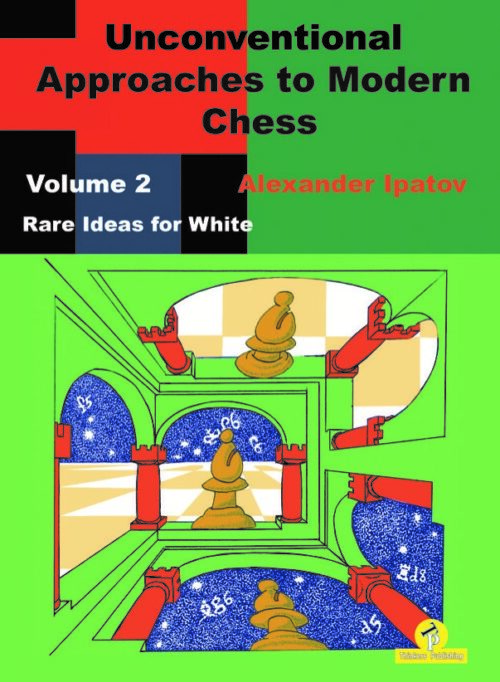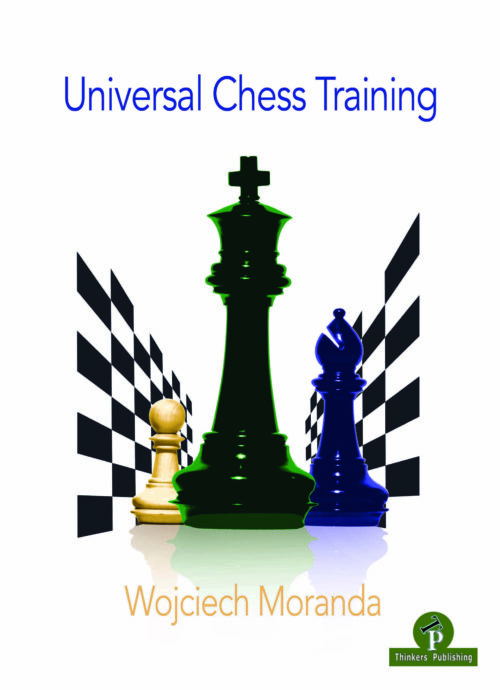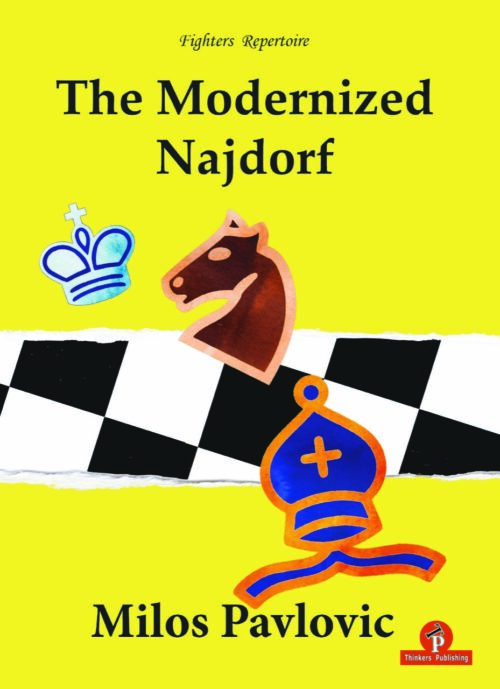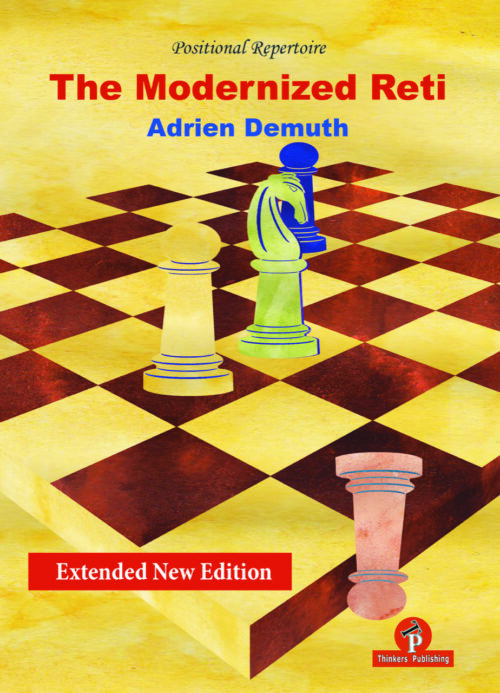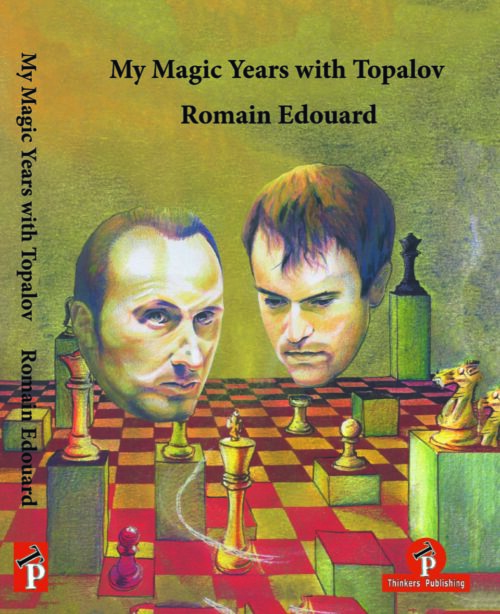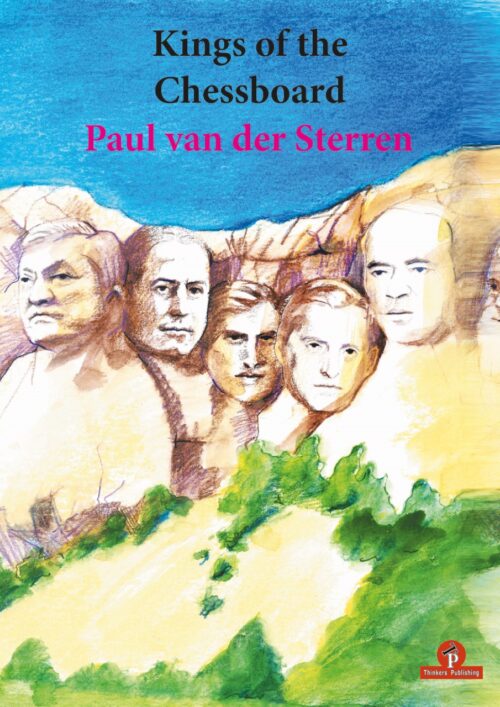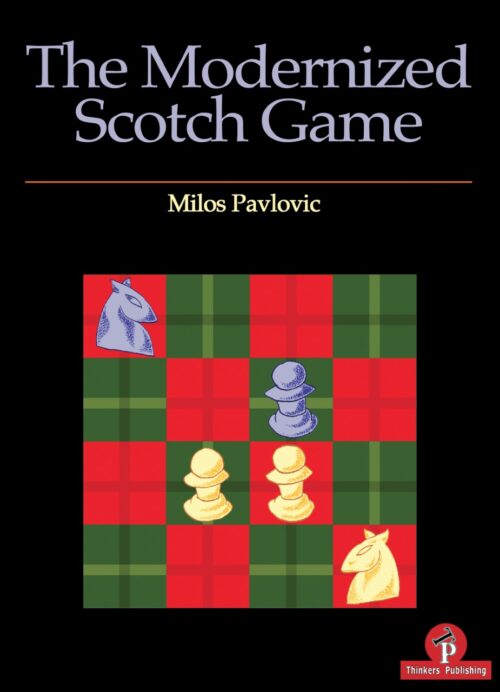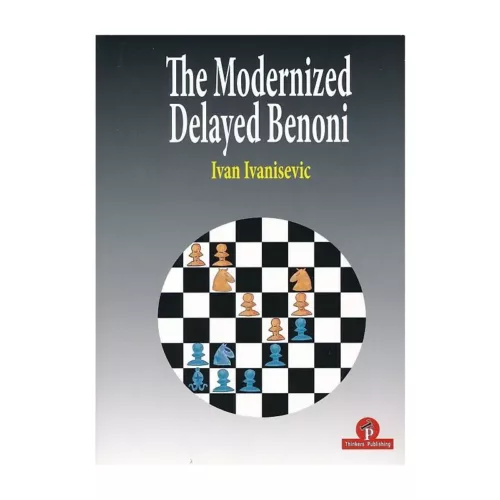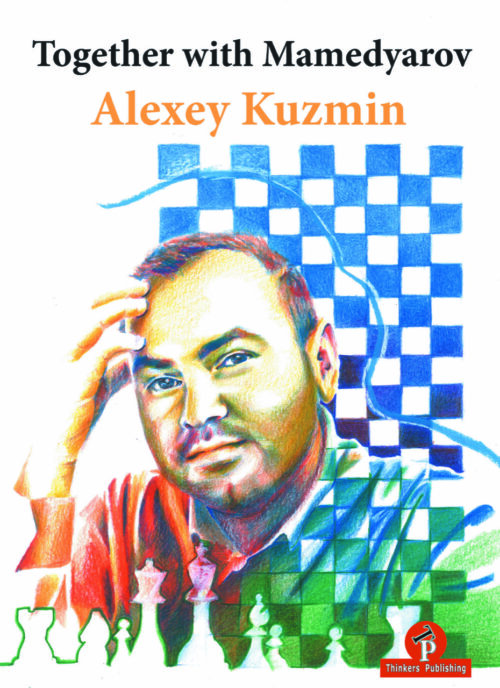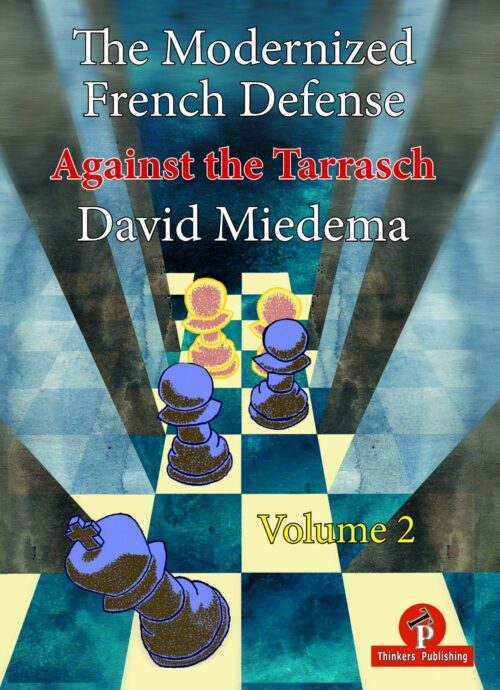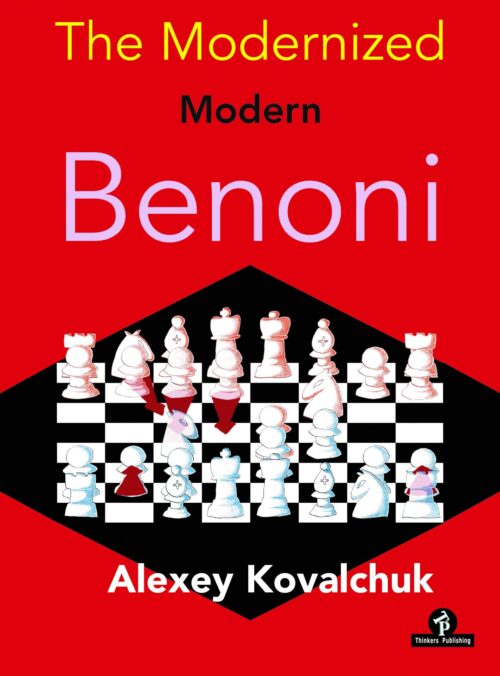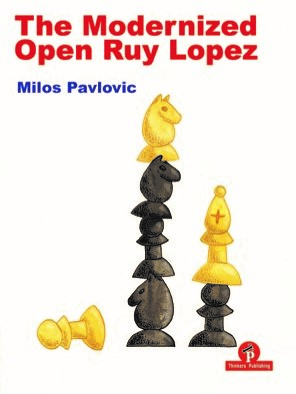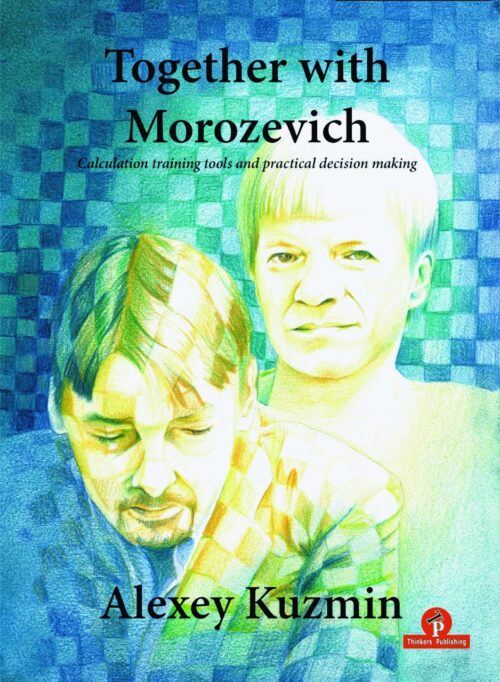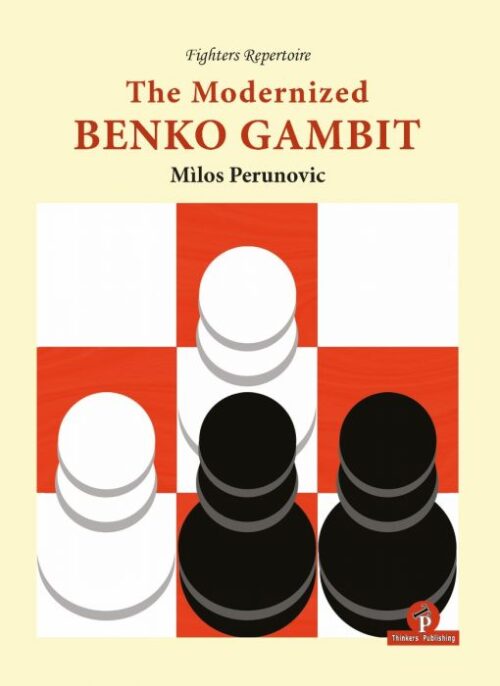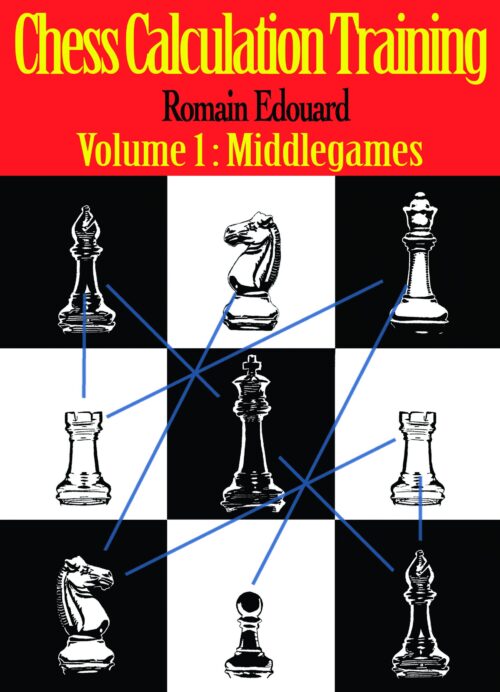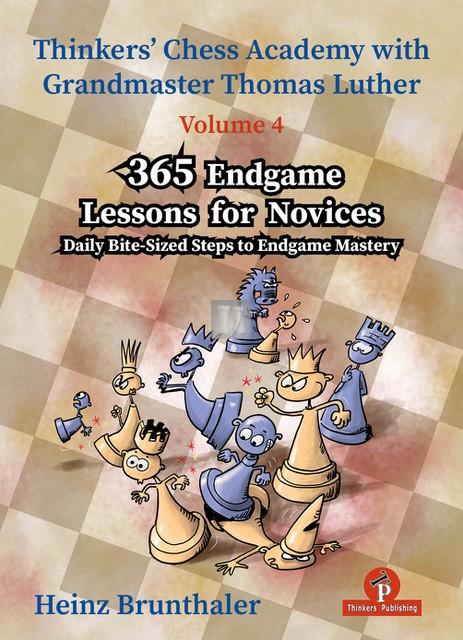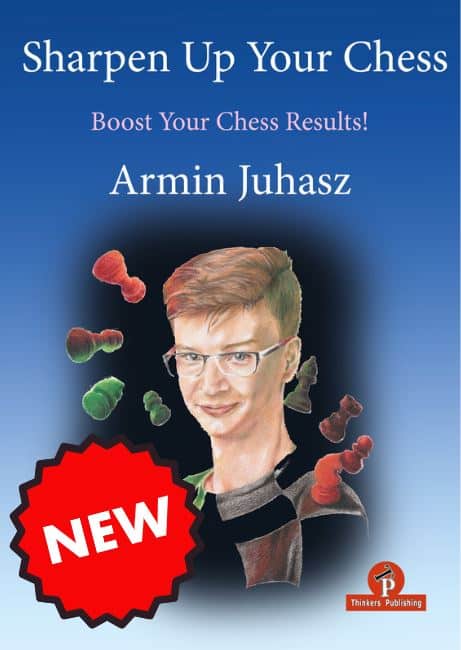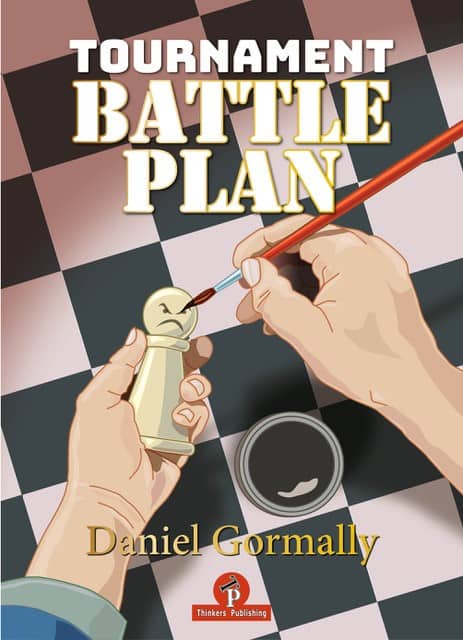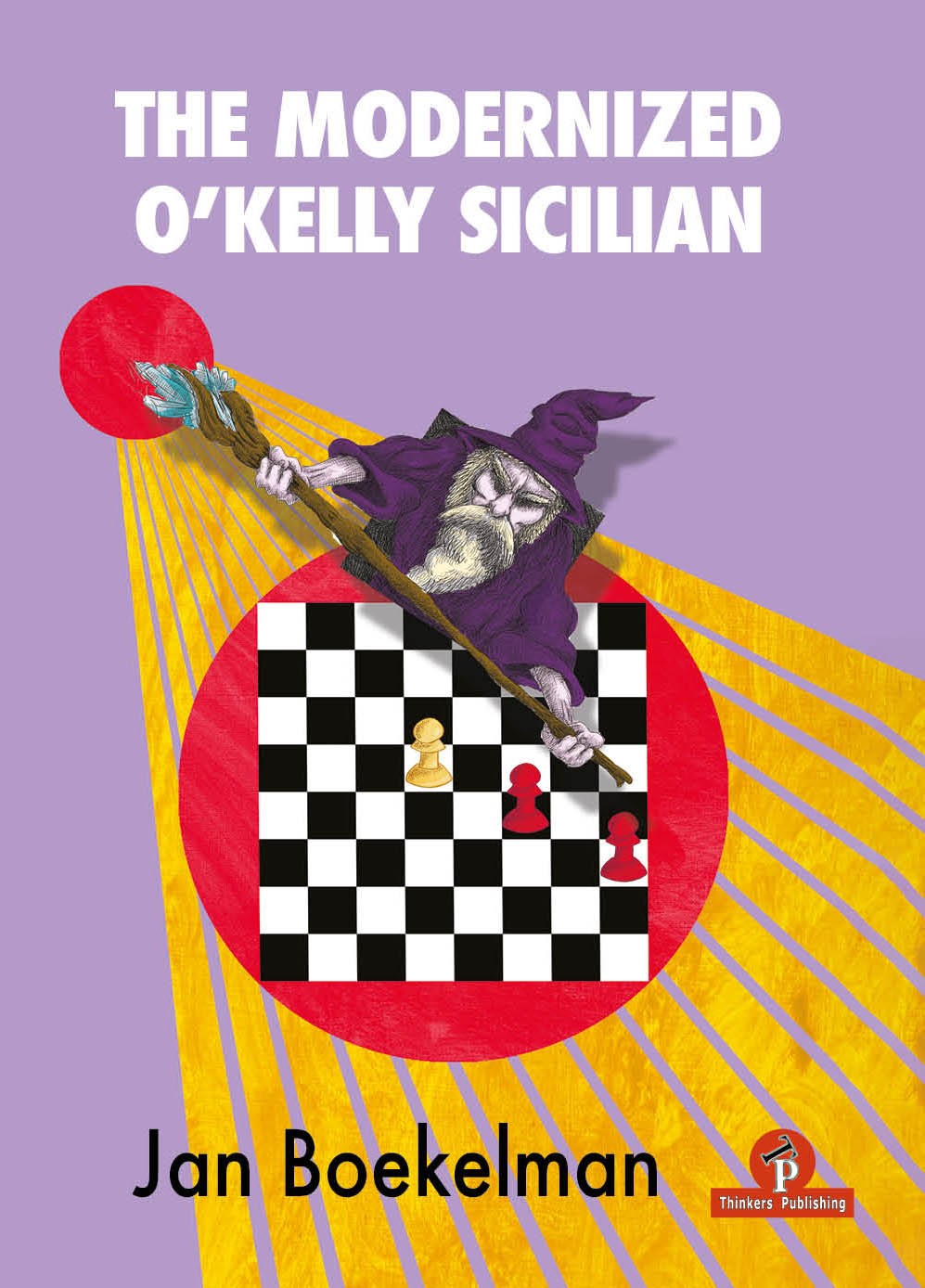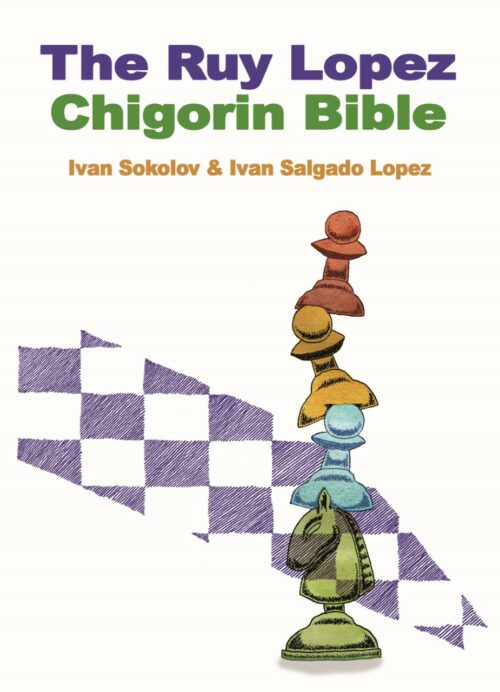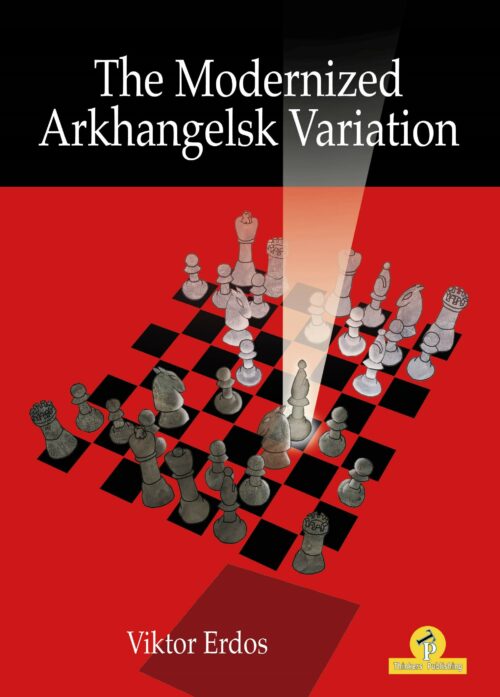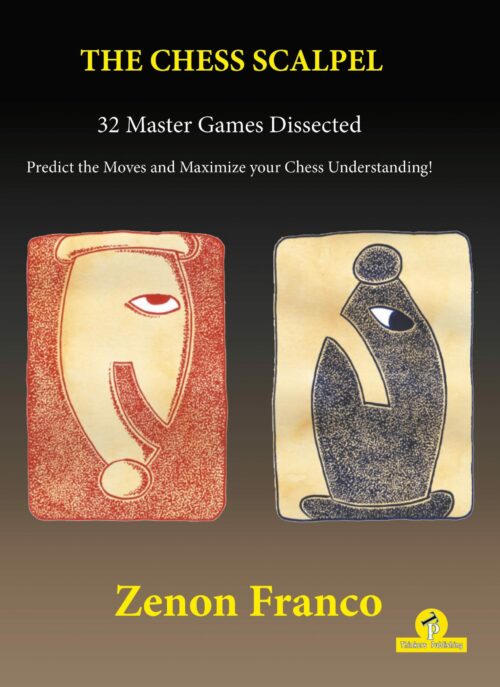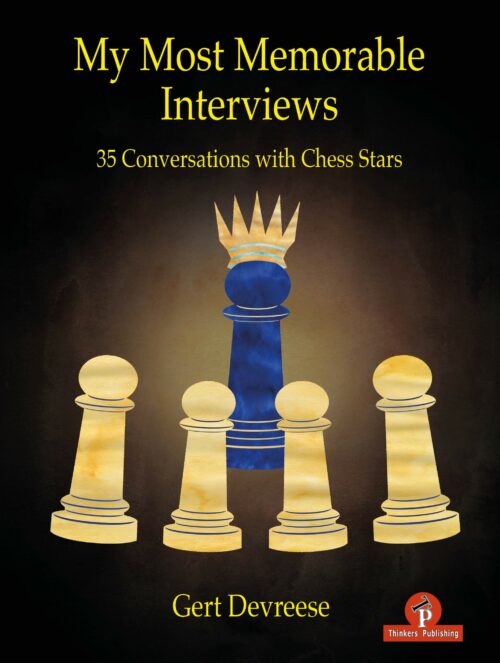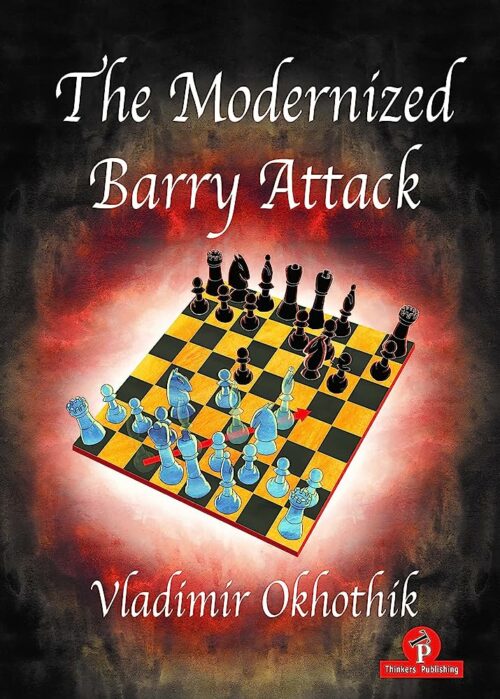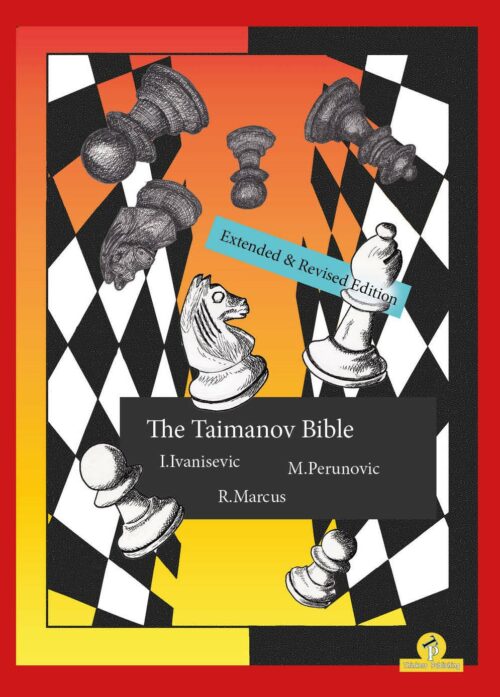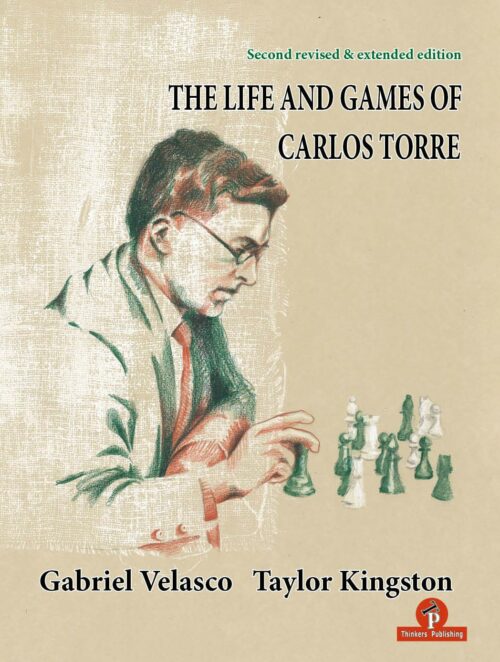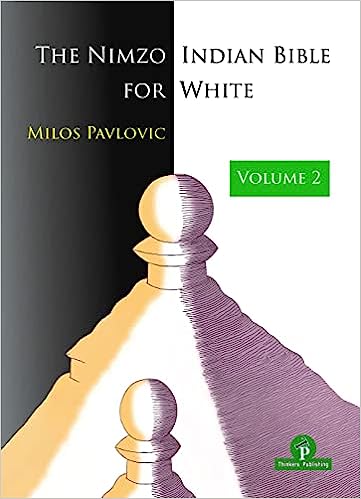-
Á útsölu!Nýr titill! Biblía Philidor skákmannsins. Virkilega vel unnin bók sem hefur fengið mikið lof. Óhætt að mæla með þessari. “Pawns are the soul of chess.” We have all heard this phrase more than once in our chess life and we owe it to the great French player François-André Danican, so-called Philidor, considered one of the best chess players of the 18th century.
-
Á útsölu!“Learning the Najdorf will help all players to understand Sicilians in a better way. Different aspects of chess such as defence, attack and sacrifice, positional themes and tactical storms, can be found in this book.” ~ Milos Pavlovic
-
Á útsölu!“Contrary to what critical pessimists might say, the Reti opening is an ambitious weapon for White. By avoiding the main theoretical debates, White tries to reach an unbalanced position from an early stage of the game, with many different plans available.” ~ Adrien Demuth
-
Á útsölu!If he thinks an idea will work over the board, the notion of risk is irrelevant to him. He wants to be on the attack and believes an objectively inferior position isn’t necessarily bad if his opponent needs to find several difficult defensive moves. “If that’s the only move for my opponent, let’s enter the line and see if he sees it!” is his philosophy.” ~ Romain Edouard
-
Á útsölu!“This book is about the greatest chess players who ever lived, who dominated their era and were looked upon as World Champions even at a time when this term, this very concept, did not yet exist.” ~ Paul van der Sterren
-
Á útsölu!“Credit can mostly be given to Kasparov for reviving this old opening, but there are many others who have contributed to exploring new ideas and forging new paths. A lot of discoveries have been made by some young grandmasters who don’t shy away from analysing deep tactical solutions with the aid of the silicon beast.” ~ Milos Pavlovic
-
Á útsölu!“In my opinion, the Delayed Benoni is a kind of mystery for White also, since it has not been covered deeply enough in chess publications. So I think that this work could be useful for White players, too.” ~ Ivan Ivanisevic
-
Á útsölu!“Together With Mamedyarov” is not a collection of his selected games but it is primarily a study-book. It contains test positions taken from games of the famous Azeri grandmaster with detailed comments on the solutions to the tasks. In this book the solutions have been placed right after a diagram with a test except for the six positions given as a warm-up in the beginning of the chapter one. For those of you who work without the assistance of a coach would recommend that you cover the answer with a sheet of paper to avoid spoiling the benefit of solving the problem.
-
Á útsölu!“It just takes some time to become familiar with all the possibilities and ensuing middlegames. But once you finally master the isolated pawn structure, it will serve you well and equip you with a wide selection of tools with which you can outplay your opponent” ~ David Miedema
-
Á útsölu!“Over time, my attention focused on the Modern Benoni. In this opening, the bishop on g7 is the same icon that is the basis of the King’s Indian, but here it can operate on the whole a1-h8 diagonal instead of being locked in by its own pawn on e5, as usually happens in the King’s Indian. Black’s plan is outrageously simple: with pawns on d6 and c5, and sometimes b4, he creates a breakwater that opens up space for his favorite on g7.” ~ Alexey Kovalchuk
-
Á útsölu!The positions arising from the Open Spanish contain ideas so different from the usual Ruy Lopez that I sometimes wonder whether it should really be considered part of it at all. It is an open game with unbalanced structures and sharp play but compared to the Sicilian, for instance, for which the previous description would also apply, there is an important difference; there is a certain degree of stability and solidity in the Open Spanish which distinguishes it from the sharper realms of the Sicilian and puts this line in its own unique category of opening ideas.
-
This book invites the reader to enter the wonderful elite chess world with one of the most creative GM’s of all time, Alexander Morozevich. It tells about his approach to the core of fighting, about his strongest points but also about his weaknesses. It presents masterpieces and painful losses. However, the author not only shows a panorama of his creativity but also offers the reader to think over the problems together with ‘Moro’. You can simply take place in his seat, look through his eyes and finally play like Morozevich!
-
Á útsölu!“With this book, I wanted to revitalise the Benko and show that, although the computer isn’t that happy with Black’s positions in certain lines, his resources are impressive, especially in ‘THE PRACTICAL GAME’, because White will face many difficulties and Black’s counter attacks, no matter how well-prepared he is. Our Beloved Benko is still very much ALIVE!:” ~ Milos Perunovic
-
Á útsölu!The problems in the book are accessible to players with a level from modest to confident. The most difficult ones are marked with an asterisk, while the most challenging chapter comes with a help page, that you may check when necessary.
-
Á útsölu!Crucial Exercises To Sharpen Your Understanding This is the third book of the Thinkers’ Chess Academy series. I thought long and hard about the best way to structure this Workbook. My idea was to make a book with additional exercises for readers of my earlier books Thinker’s Chess Academy Volumes 1 & 2 (TCA1 and TCA2 for short) while working with these books, plus material for really interested and ambitious readers to maintain and broaden the skills they have already learned.
-
Á útsölu!
- The clarity, simplicity, and pure instructiveness of this book is striking.
- The analysis is first rate, the commentary cogent, and the production excellent.
- The emphasis is on general principles that readers will be able to use in their own games.
- The key is to always stay ahead of your opponent and know how to control the chaos on the chess board. Armin Juhasz explains all this in detail without losing sight of practical decision making.
- With the right strategies, anyone can become a champion and level up their game to become unstoppable. This book is for the ambitious and keen player!
-
Á útsölu!
- Jan Boekelman has produced you with a playable repertoire out of a somewhat sideline Opening, which nobody dared to touch to make it into an entire repertoire.
- Try to expand your knowledge in the 3.c3 variation and go beyond the book’s content
- Deepen your knowledge in 3.c4 variation and do not play it before you know it well
- Finally, follow the very strong GM Vladislav Artemiev, who has had a relatively successful run with this opening in rapid online events.
-
Á útsölu!“The current trend, developed in recent years, is for Black to capture on d4 with his e-pawn, aiming for Benoni-type pawn structure positions which lead to rather double-edged positions.” ~ Ivan Sokolov
-
Á útsölu!Find your role model. This book contains games from every single female World Champion, as well as young up and comers, top seasoned professionals, streamers, and even a section at Beth Harmon from the recent famed Queen’s Gambit hit show. This book is not just for girls and women, however. Any chess player can learn from these games and discover female chess history, both from the famous players in the past right up to the present day.
-
Á útsölu!My aim with the book was to provide you with a lot of insights into this remarkable variation, The Ark, and to entertain the reader with spectacular, resourceful lines to illustrate the ideas. Thus, I must stress that my book should also be interesting for those who just enjoy chess in general, not just for the fans of this line seeking new ideas! Of course, you don’t need to memorize everything to be able to play the variation successfully. Longer lines merely tend to be examples of how the game might develop, which help to enhance your understanding.
-
Á útsölu!The idea behind this book is for you to ‘play’ as in a real game, and it is my job to ensure you have a pleasant time while training. I suggest you take at least an hour and a half for each game and as your coach I will indicate when to guess the moves. Sometimes there will be suggestions — including tricky ones — to measure your concentration level. The ideas behind the moves are always explained. The games have been chosen according to my personal liking and commentaries are based on those by the players themselves, which is a great help in understanding what indeed happened. In some games you will have to guess moves for the losing side too. Indeed, I expect that as you proceed you will become familiar with the question of Mark Dvoretsky: “What could my opponent play?”. Importance has also been given to the practical aspect, which doesn’t always coincide with the suggestions off ered by the engines as best. This is to make it more like ‘a real game’.
-
Á útsölu!The Staunton Gambit is a very rewarding opening. White’s piece development follows the classical principles of gambit play. White is ahead in development and obtains a fine initiative. Even without the theoretical knowledge of certain variations, White should be able to find his way. Best of all, White determines the direction of the game already on move two, without the risk of having to play the maneuvering games we know from the Leningrad Dutch, the Stonewall Dutch or the Classical Dutch.
-
Á útsölu!I like the fact that a publisher has now been found to compile his best stories. The biggest names pass by: Kasparov, Karpov, Timman, Carlsen, Polgar, Kortchnoi, Anand, Caruana, Giri, Hou Yifan… This is just a sample, all portrayed at a time when they were in the spotlight in one way or another. The power of a good interviewer is that he prepares well. And that is what Gert does. Moreover, he is also conscientious in the elaboration of his stories. He checks facts and calls or emails the interviewee if something is not clear to him or needs explanation. I hope the reader enjoys reading this book. Jeroen van den Berg
-
Á útsölu!• The Barry Attack is a little rebellious but most dynamic opening • It’s one of the fastest ways to outplay your opponent in the opening. • The ‘’super repertoire’’ that always keeps Black under pressure in all variations. • Any reasonable opening set-up can work wonders for White or Black if they know it well. • Anyone who takes the trouble to play through each model example, move by move, note by note, will be rewarded. • Your strategic play will deepen and your tactics will improve along with your assessment skills, and you’ll end up with a great repertoire!
-
Á útsölu!n addition to the basic Taimanov ideas we had to keep, we followed – in an original manner – our two main concepts: ‘almost never play an early …d6’ (Scheveningen-style) and ‘push …h5 whenever you can’ (Paulsen-style). The latest fashion, which we have to mention, did not even exist when we started to write our book – the 7.Qf3 line. Readers will have the choice between the peaceful 7…Bd6, and 7…d6 where we head for a sharp Sicilian, true to its style. In the famous English attack with Be3 – Qd2 – 0-0-0, in addition to the well-known …Bb4 and …Ne5, our second proposal – of which we can safely state that we are most proud – is called the “Serbian variation” starting with …Bb4 and …0-0. About the specific move order in reaching our Paulsen-Taimanov variation, there are two possibilities. The first possibility is to start with 2… e6 and 4… Nc6, and the second one is revealed by 2…Nc6 with 4…Qc7. We decided on the move order 2…Nc6 and 4…Qc7 firstly because we all learned this way in the Paulsen-Taimanov variation, but also for practical reasons. Firstly, we avoid 5.Nb5, which results in typical Hedgehog set-ups, and these positions are not to everyone’s taste.
- Another reason is to keep in reserve the option of playing …e5 at once, or sometimes even …g6 without touching the e-pawn. This book is the result of twenty years of our work and playing the Taimanov combined. We have played over 500 games in this variation and we desired to show all the beauty and richness of “our” variation. We hope that our book will conjure all this and more, and will help our readers into the labyrinths of our Taimanov Bible.
-
Á útsölu!Here is what has been added to this edition:
- More accurate and extensive annotations using ChessBase and Stockfish 14.
- Torre’s own annotations to several games have been unearthed and added.
- Added games to give a more rounded view of Torre. Also the six games between players other than Torre that he annotated for the Mexican Championship tournament book.
- Many more diagrams and photographs. Also more thumbnail bios of Torre’s opponents.
- More ancillary material about Torre’s life and career: newspaper articles, pictures, anecdotes, interesting facts, opinions, trivia etc.
- A 1927 interview with Torre, published in the Yucatán magazine Anahuac.
- Excerpts from 64 Variaciones Sobre un Tema de Torre by Germán de la Cruz.
- Columns and articles from newspapers in Torre’s home town of Mérida.
- “A Clash of Opposites,” comparing and contrasting Torre with the notorious Norman Tweed Whitaker.
- The full text of Torre’s 1926 booklet Development of Chess Ability.
- A review of Torre x Torre, a fascinating documentary film.
- A more extensive, more fully informed overall assessment of Torre as a player.
skákbækurTómas Veigar Sigurðarson2023-06-12T16:33:59+00:00

